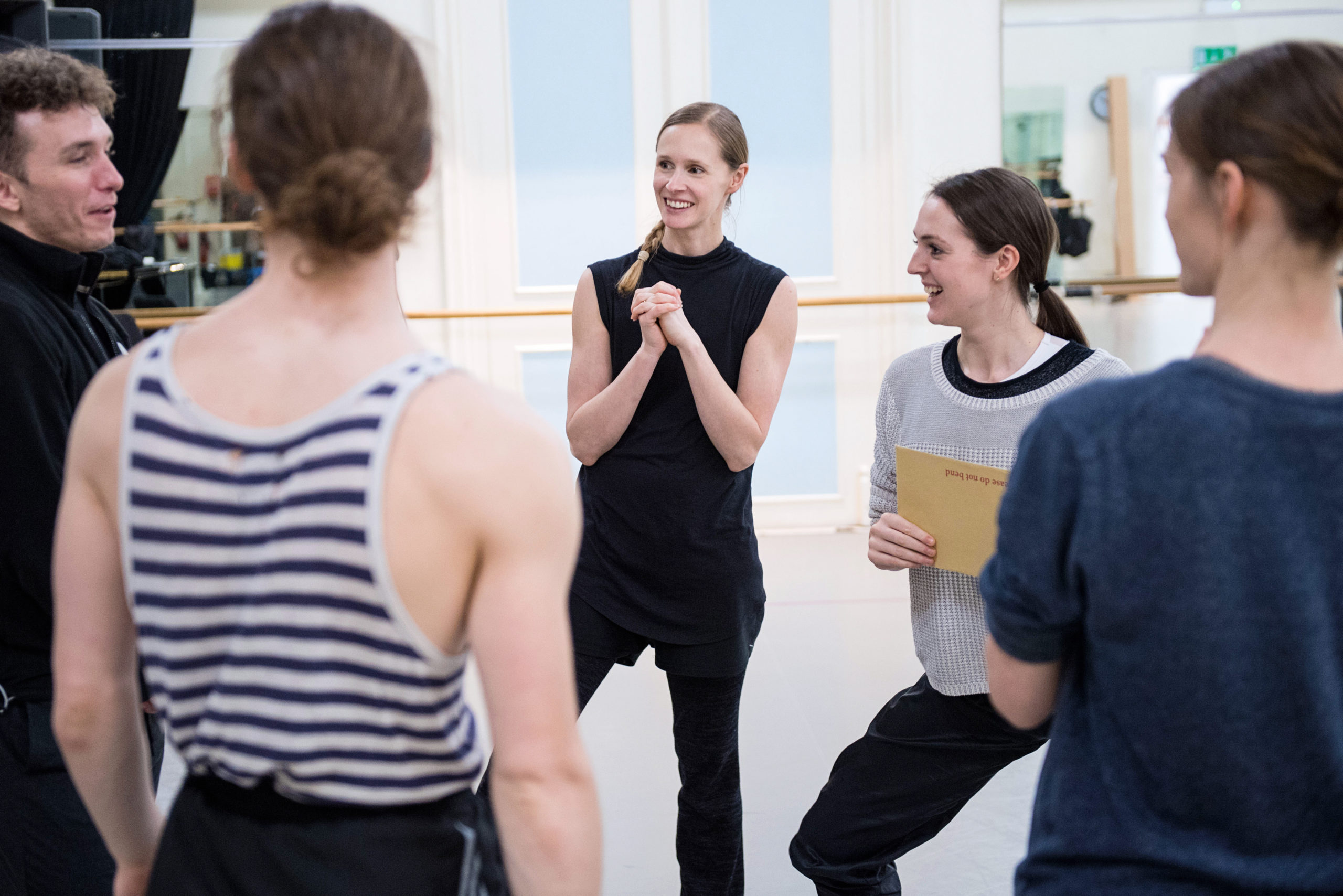Meet Stina Quagebeur, English National Ballet’s Rising Choreographer
Since joining English National Ballet in 2004, first artist Stina Quagebeur has delivered memorable dramatic performances in works by the likes of Akram Khan and William Forsythe. But it wasn’t until 2019, when she also became an associate choreographer there, that her creativity was thrust into the spotlight. Combining classical references with a contemporary sensibility, Quagebeur’s choreography often uses literature as a stimulus. Her pieces Vera (2014) and Nora (2019), for example, were based on Vera Brittain’s Testament of Youth and Henrik Ibsen’s A Doll’s House, respectively. Even as Quagebeur begins to experiment with non-narrative dramaturgies, her work continues to be defined by its perceptive portrayals of human emotions and relationships.
Company: English National Ballet
Age: 37
Hometown: Sint-Lievens-Houtem, Belgium
Training: The Royal Ballet School, English National Ballet School
Accolades: Winner of 2020 Emerging Artist Award, nominee for 2020 Best Classical Choreography (Nora) and nominee for 2021 Best Digital Work (Take Five Blues) at the UK National Dance Awards
Kid choreographer: After watching shows by Maurice Béjart and Mats Ek as a child, Quagebeur often created her own variations mimicking their styles. “Contemporary choreographers made me realize that there are so many different dance languages outside of ballet,” she says. “When I joined The Royal Ballet School’s White Lodge at 11, I was immediately ready to take any choreographic opportunities that came along. I really enjoyed not just being told what to do.”
Working with Akram Khan: Quagebeur has created two roles in Khan’s ballets for ENB: the Doctor in Creature (2021) and Myrtha in his reimagining of Giselle (2016), which she cites as her most rewarding role to date. “Akram is very interested in the intention behind movement. Exploring that with my own body has given me so much to bring into my own work.”
Pleasure in the process: For her first work after the pandemic’s outbreak, Quagebeur moved away from narrative storytelling and made a more abstract, jazz-inspired digital work, Take Five Blues, set to Nigel Kennedy’s mash-up of Bach’s Vivace and Paul Desmond’s Take Five. “We had such an amazing time creating it in semi-lockdown with a small group,” she says. “We filmed it without an audience, but it didn’t matter. It was just for us.”
What her mentor’s saying: “From the very beginning I knew that she was driven, passionate and someone to watch,” says Kerry Nicholls, ENB’s associate director for artistic development and Quagebeur’s mentor since 2013. “She researches like a beast and has really intellectual starting points. At times I’ve said: ‘Don’t plan, don’t research, just trust your skill in the moment.’ ”
A green thumb: During lockdown, Quagebeur tended to her parents’ tomato plants and vegetables. “I have so many random hobbies, like cooking and watercolor painting. They help me to get into a creative space and escape from my constant to-do lists,” she says.
New horizons: As well as expanding Take Five Blues for a triple bill alongside works by Ek and Forsythe at Sadler’s Wells in November, Quagebeur is creating two new works, for Northern Ballet and Staatsballett Karlsruhe, to be performed later this season. “I think that it’s going to be great for me to start venturing out,” she says, “seeing what other dancers can give me, and how my work will develop as a result.”





